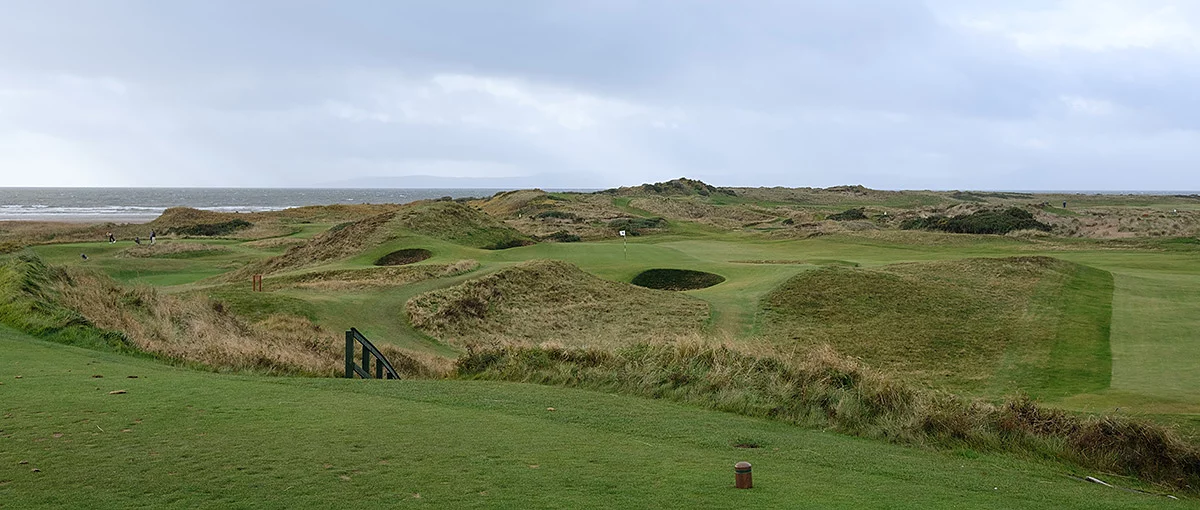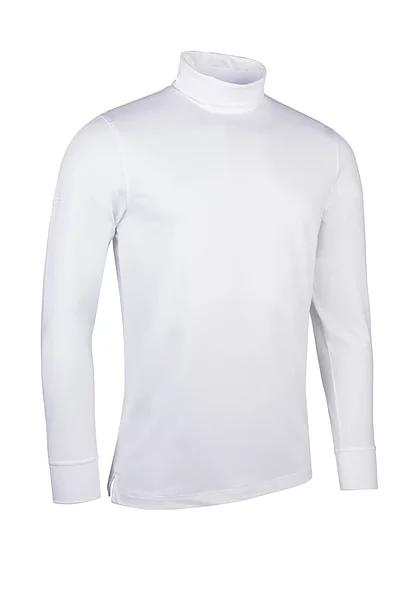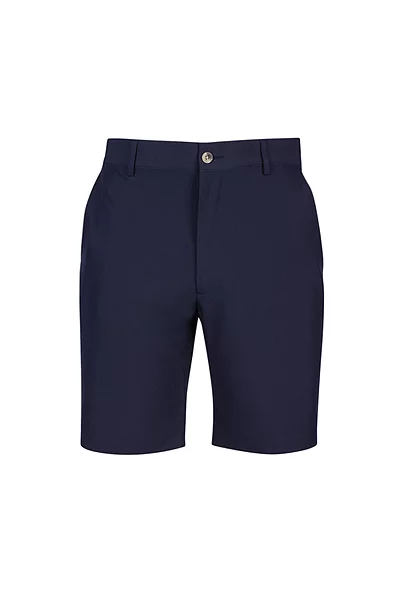After the gold medal, there was no time for rest. We had a tee time at the site of last year’s Open Championship, Royal Troon. The journey was only a mere 2.5 hours from St. Andrews, but that still resulted in an early wake-up call for the cross-country road trip. Around 8:00am, Ed headed to the train station, and I waited for the golf chariot to arrive. On the tee sheet, was me, Charlie, Finlay and Nick, who was kind enough to organise the game. We piled into the car, four sets of clubs, duffels, golf shoes, and set our sights West. It always feels slightly sacrilegious leaving St Andrews in pursuit of golf, but for Royal Troon, we made the exception gladly.
Upon arrival, we unloaded and headed into the locker rooms to layer up. Anyone who has been to Scotland’s west coast knows that even on the verge of summer, the skies can give you all four seasons in one day. Blustery in the morning, we knew we had to layer up, so Charlie and I opted for the Glenmuir Kelso cotton roll neck in White with our Knox merino sweaters firmly on top. Fin and Nick wore slightly different combinations, but when we all rolled onto the first tee box with Glenmuir knitwear on, I knew we were well equipped to make the journey south towards the Postage Stamp.
 |
 |
Starting strong at Troon is critical, with the Firth of Clyde and the Isle of Arran off to one’s right, and a sea of bunkers to the left. Known as the WW2 course, as one typically goes out in 19(39) and comes home in 19(45). It lures you in with a false sense of security, with the overwhelming serenity which is felt as soon as you stand on the first tee. The first six typically play down wind, but deep down you know that the real battle lies in the six back and forth holes and the final test which is the final six, seemingly always into wind.
A few well placed shots early on will make you believe that you have a real score on your hands. Make one or two pars, hit a few good wedge shots, and keep the ball in play off the tee and you’re golden. Until, you reach the par five, sixth hole, known as Turnberry, which famously became the longest hole on the Open Rota last year, at a staggering 623 yards. It serves as a vast contrast to the eighth, the famous Postage Stamp, which played as little as 98 yards during last year’s Open Championship the shortest hole on the rota. It is safe to say we were more prone to luck than skill, as we miraculously put 3 balls on the green on the Postage Stamp, walking away with two birdies and a near ace. However, anyone who has seen or played the hole knows the runoff to the right side is no joke, proving that the most difficult holes do not have to be the longest. We didn’t fare quite as well on the sixth, where stringing three solid shots together proved far trickier.
 |
 |
As we made the turn, we dropped balls and teed it up from the championship tees on number ten, hitting up and over the huge mounds on the left side, not exactly knowing where the railway begins to cut in. We trekked up and around to the fairway and the infamous Scottish sun began to show itself. A welcome gesture, but perhaps a cruel one, as the course was ready to bare its teeth.
The eleventh hole was described as the most difficult hole on the Open Rota by both Palmer and Nicklaus, citing the gorse down the left and railway to the right, there truly is no room for error off the tee. The second shot does not get easier, typically with a long iron in hand and playing to a saucepan green. After making a big number, the course treats you to one last downwind hole, before heading north until you reach the clubhouse. Sixteen, seventeen and eighteen are a spectacular finish, offering one last scoring opportunity on the par five and then demanding one of your best shots of the round on the next tee box. Eighteen will still get your heart racing, requiring precision to avoid a pot bunker off the tee where Greg Norman found himself in his 1989 playoff, and Stenson was famously two yards shy of falling victim in 2016, and composure on the approach, as the main smoking room of the clubhouse sits a mere three paces off the back of the green.
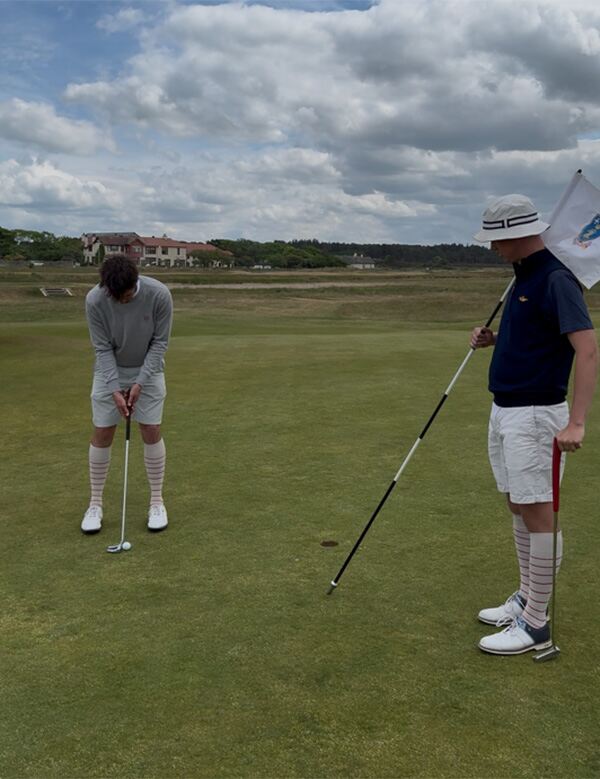 |
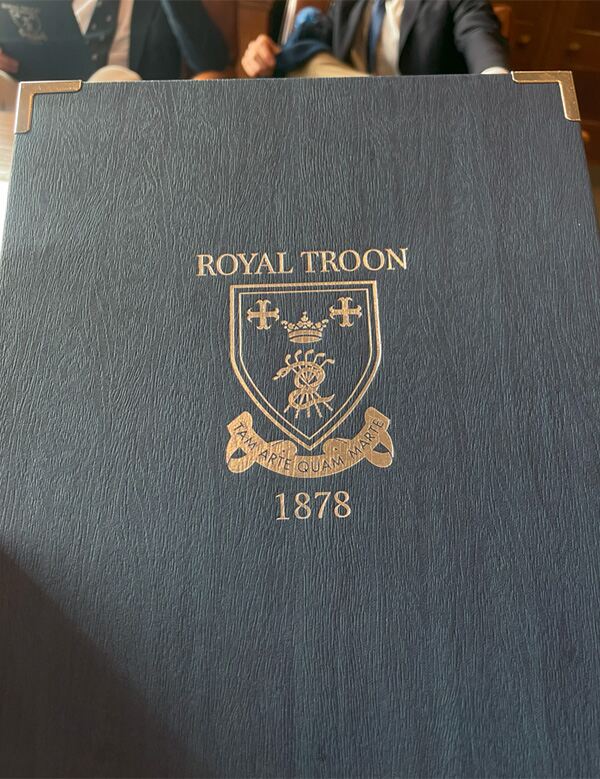 |
It is hard not to get into the spirit of the Open when playing Royal Troon, just knowing that the greats of the game have all graced these fairways before you. Palmer and Watson lead the list of historical greats, but the battle between Stenson and Mickelson dominate recent memory. At the end of the day, there are few places that rival this catalogue of history, and coming in off the course, taking the Glenmuir kit off, throwing on the jacket and tie, and sitting down and sharing a drink in the lounge is the best way to debrief the round. Recapping our group’s best-ball match brought no shortage of laughs, as we discussed holes which were won by scores of par and bogey, contrary to the final round of 2016’s Open where the leaders battled and halved holes in birdie. Nonetheless, the fun we had rivalled theirs, and it is safe to say that Royal Troon and the West coast of Scotland is any golfer’s paradise.
